Wood
As a self-renewable resource, wood has proven its worth in the conservation of our ecosystem. Wood is either naturally durable or can be artificially preserved for the desired application. It is beautiful, strong, environmentally friendly, CO2 neutral, recyclable and infinitely renewable as long as it comes from sustainably managed forests.
European timber
Jungle Gym climbing frames and playhouses are made of high-quality timber sourced from European forests. Wood from coniferous tree species such as pine and spruce are used. Cut correctly, these woods are the ideal material for building sturdy, durable products. Given these properties, alongside the natural beauty of such woods, these timbers are perfect for building safe, strong, and elegant climbing frames, playhouses and swing sets.
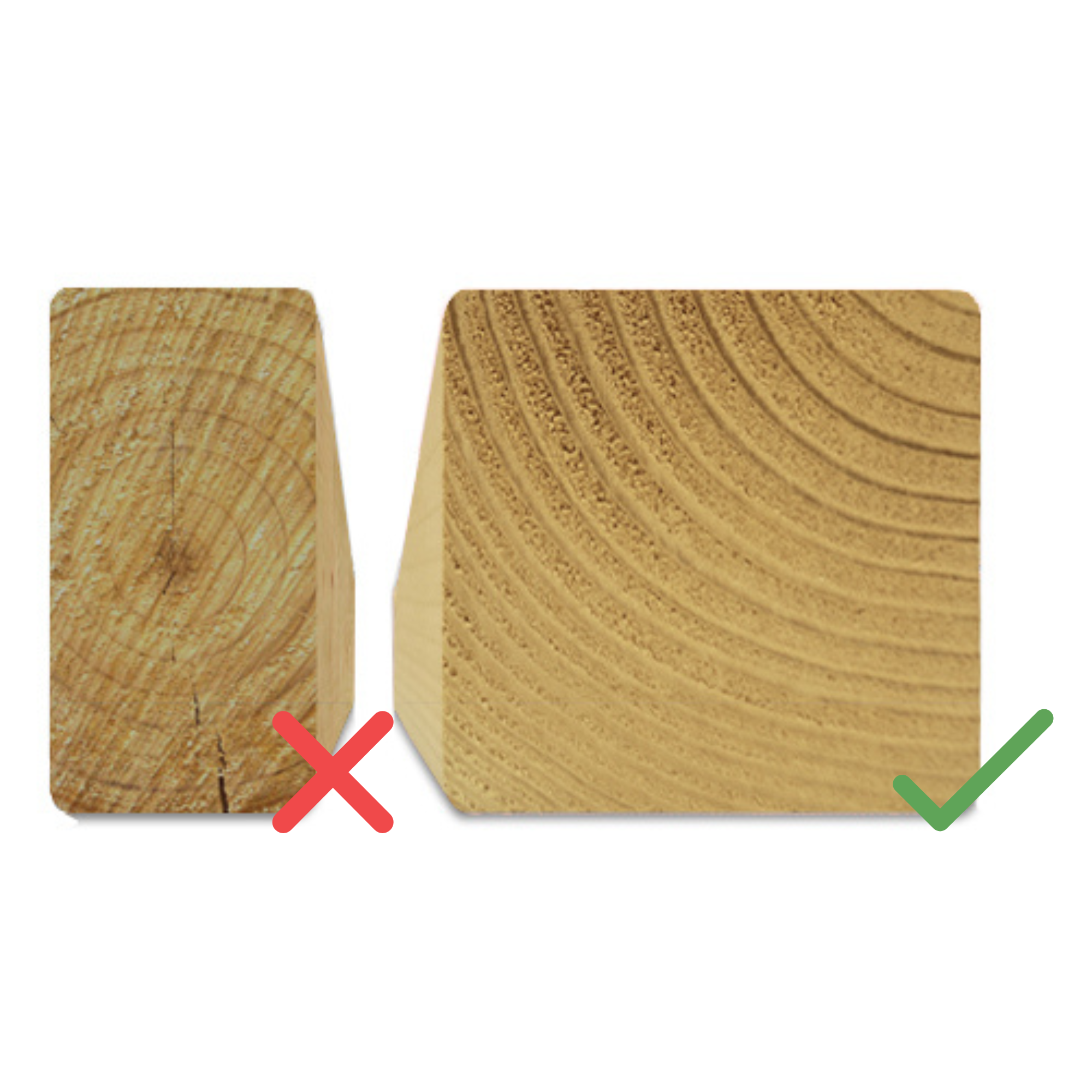

Robust timber parts
All timber used by Jungle Gym is carefully selected, cut to length and planed smooth. Timber is cut to specific dimensions which maximises its sturdiness and structural integrity. We do this to set ourselves apart from many of our competitors and ensure we provide robust products which stand the test of time and enable your child to play safely for years to come.
Wood species & characteristics
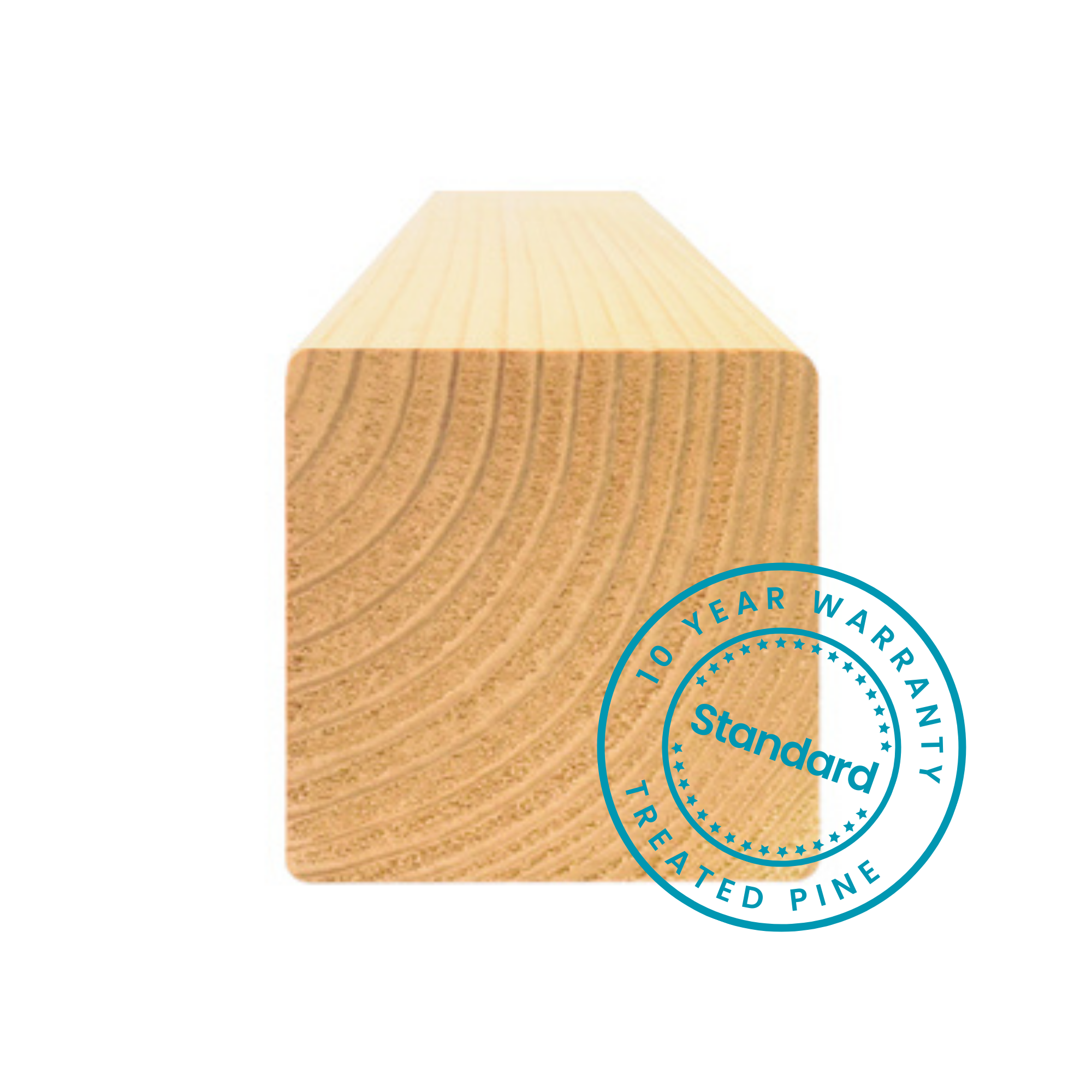

Sustainability |
Standard pine/ spruce |
| Impregnated to protect against wood rot | X |
| Long lifespan | X |
| Derived from sustainable forests | X |
| Local European production | X |
| Backyard climbing frames: 10 years warranty | X |
| Commercial playground equipment: 5 years warranty | X |
Maintenance |
|
| Water and weather-resistant | X |
| No painting required | X |
| Greyed and weathered without maintenance | X |
Construction |
|
| Solid and robust dimensions | X |
| Superior strength and sturdiness | X |
| Cut to length with rounded and sanded edges | X |
| No toxic substances or allergens | X |
Sustainability
The wood Jungle Gym uses for its climbing frames and playhouses is PEFC certified. These are international non-profit organizations that promote sustainable forest management through independent third-party certifications. These certifications guarantee that your Jungle Gym is made of wood sourced from sustainable forests with consideration for people, wildlife and the environment. Trees are a critical part of our ecosystem; they generate oxygen, improve air quality, conserve water, protect our climate and are home to millions of species of wildlife.
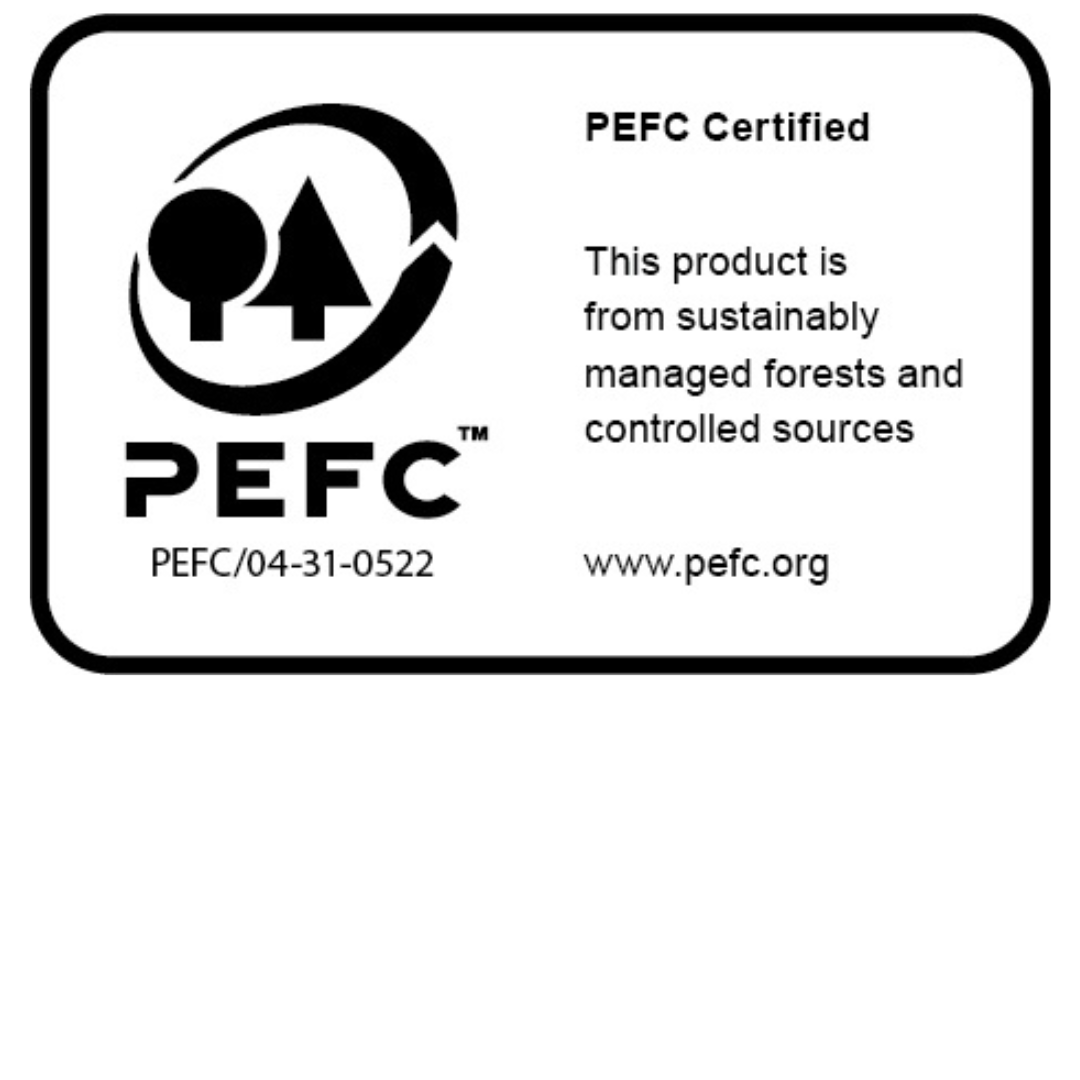

Warranty on timber
The timber components of Jungle Gym play equipment are impregnated Pine and Spruce, which is resistant to rot. We’re very confident in the quality of our timber and therefore give a 10-year warranty on all timber in the case of rot. If the wood of your Jungle Gym climbing frame is affected by rot within the warranty period, it will be replaced free of charge, under the conditions that assembly instructions are properly followed and no alterations have been made.


Wood characteristics
Because wood is a natural product and every tree is unique, every piece of timber varies from the next and has its own specific characters. Over time, timber used outdoors will experience faded colouring, deviations in dimensions, knots, resin pockets, cracks, and other deformations. These features give the wood its character and natural beauty and do not affect the structural integrity of your climbing frame.
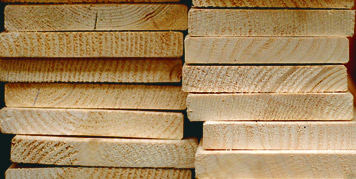

Expansion/contraction
Wood responds to changes in temperature and humidity by expanding and contracting e.g. in extreme dryness the wood shrinks, and in high humidity, it expands. This can result in dimensional deviations of up to 10%. This is a characteristic of wood that is unavoidable.
Tip: To ensure an exact fit, the wooden parts are not pre-drilled. We recommend pre-drilling the wooden boards first to avoid cracks.
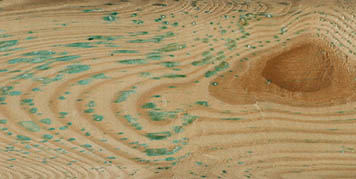

Green spots
During impregnation, wood is coloured green by the copper-containing preservative we use. In places where resin is present in the wood, this manifests in the form of green spots and the formation of salt crystals. This is common and occurs in all impregnated wood. After being exposed to the sun for a few weeks, the spots will disappear. After this has occurred, it's possible to stain the wood, if desired.
Tip: Lightly sand any severely affected areas.
Tip: Stains and weathering of the wood can be treated with an oxalic acid based stain remover. The solution has multiple possible applications, for example, to remove green deposits and to prevent greying.
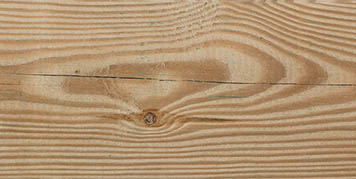

Deformations
Wood responds to changes in temperature and humidity by expanding and contracting. This can inevitably lead to cracks and other deformations. This is a characteristic of wood that is unavoidable and usually has no effect on the structural integrity of your climbing frame.
Tip: Cracks under ¼ of the wood length and ¼ of the cross-section length will not compromise the strength and stability of your playground equipment.
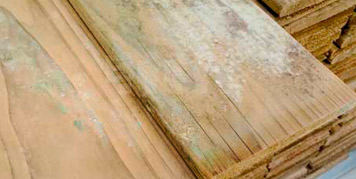

Mildew
Impregnated wood is very moist. In warmer seasons especially, the wood is susceptible to mildew or mould as it dries out. This can result in white spots on the wood’s surface. This fungus does not affect the quality or strength of the wood and is not harmful to health. These superficial imperfections disappear by themselves, but are also easy to remove
Tip: Upon receipt of your delivery, remove any protective film to prevent condensation from forming underneath the film, as this will produce stains and mould on the wood.
Tip: Stains and weathering of the wood can be treated with an oxalic acid based stain remover. The solution has multiple possible applications, for example, to remove green deposits and to prevent greying.
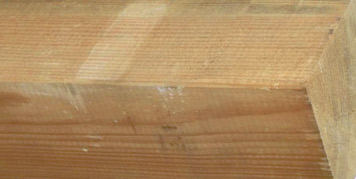

Discolourations
During impregnation, drying, and storage, some areas of the timber may be covered, while other areas may be exposed to sunlight. Light reacts with the wood and preservative to turn the exposed area of the timber brown before discolouration and fading occur.
Tip: After being exposed to sunlight for a few weeks, the colouring of the wood will even out.
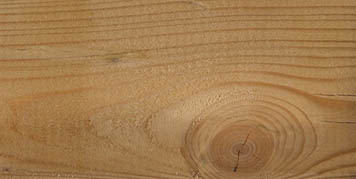

Knots
Some wood pieces may contain knots. Knots are round or oval areas of dense, dark, wood, where a branch once grew. Knots are a natural property of wood and contribute to its character.
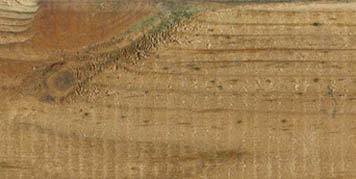

Irregularities
Rough spots and splinters may occur on some wood parts. Despite careful selection and production, these cannot be completely avoided. Depending on the type of wood, rough spots occur mainly around the knots and at the outer ends. These aesthetic defects form an inseparable part of the wood and do not affect its strength nor are they cause for concern.
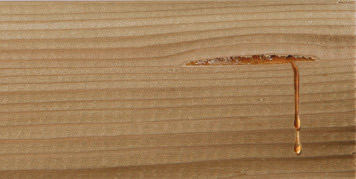

Resin
All coniferous tree species contain resin pockets. Due to the effect of sunlight, in the first year resin may ooze from the fresh, newly cut wood. The sticky substance can crystallise on the wood surface, taking on a yellowish colour. These processes are natural and are considered normal.
Tip: Resin can easily be removed by scraping it off with a sturdy brush or putty knife. If necessary, you can also use a special alcohol-based resin removal agent.
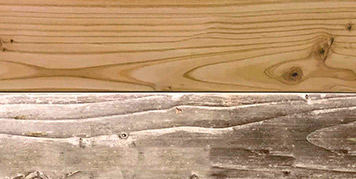

Maintenance
Due to the effect of sunlight and other weather elements, the colour of wood will change gradually over time. This natural ageing does not affect the durability of the wood and does not compromise the timber quality. Impregnation of the wood is a protection against rot and not a decorative finish. If you wish to preserve the original colour of the timber, you can treat it with a special wood oil or stain, or a water-based paint or varnish. Do this 4 weeks after assembly.
Tip: The darker the colour of the chosen finish, the less visible the natural ageing will be.
Tip: Stains and weathering of the wood can be treated with an oxalic acid based stain remover. The solution has multiple possible uses, for example, to remove green deposits and to prevent greying.
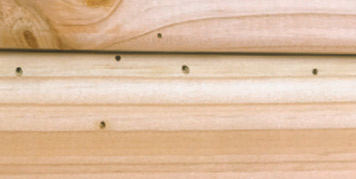

Dark spots: small exit holes
In nature, small beetles often feed off the sap of trees. When these trees are processed and the wood is sawn, the timber loses its nutritional values causing the beetles to leave the wood. When this occurs, it may create a few small exit holes surrounded by dark spots. These do not impact the strength or quality of the wood and therefore are no reason for concern.
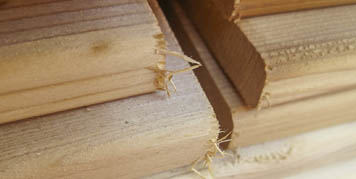

Splinters
Splintering may occur at the ends of wooden pieces when they are cut to length. The long sides of all wooden pieces are rounded and planed, however, the ends are not. These are only visible to a limited extent, and therefore, have little impact on aesthetics. Using sandpaper, edges can be rounded off and splinters easily removed.
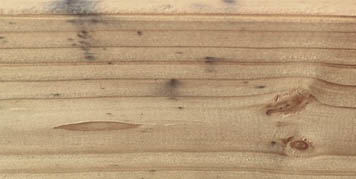

Dark discolourations and/or stains
Over time, all woods experience discolouration. Douglas wood tends to discolour slightly faster than other woods and may turn black when in contact with moisture and metal connecting elements. Superficial stains can be mistaken for mould, but are fortunately easy to sand down and clean. This natural reaction in no ways impacts the integrity or durability of the structure.
Tip: If desired, the stain can be treated with an oxalic-acid based stain remover. This solution (10% oxalic acid, mixed with water) is available at many hardware and DIY stores.
Do you have any more questions? Head to our customer support page for more information about our wood species and properties.